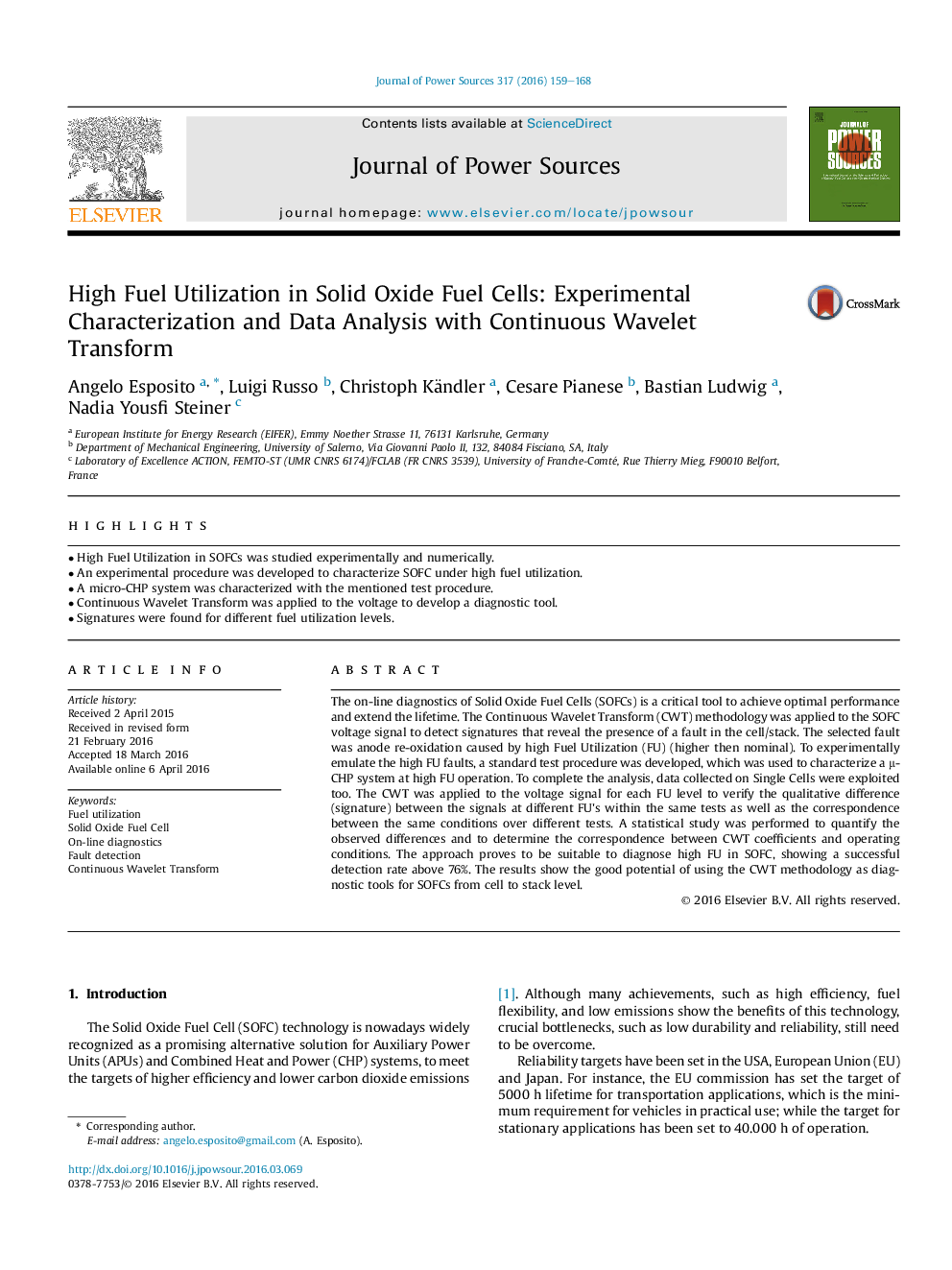| Article ID | Journal | Published Year | Pages | File Type |
|---|---|---|---|---|
| 1286158 | Journal of Power Sources | 2016 | 10 Pages |
•High Fuel Utilization in SOFCs was studied experimentally and numerically.•An experimental procedure was developed to characterize SOFC under high fuel utilization.•A micro-CHP system was characterized with the mentioned test procedure.•Continuous Wavelet Transform was applied to the voltage to develop a diagnostic tool.•Signatures were found for different fuel utilization levels.
The on-line diagnostics of Solid Oxide Fuel Cells (SOFCs) is a critical tool to achieve optimal performance and extend the lifetime. The Continuous Wavelet Transform (CWT) methodology was applied to the SOFC voltage signal to detect signatures that reveal the presence of a fault in the cell/stack. The selected fault was anode re-oxidation caused by high Fuel Utilization (FU) (higher then nominal). To experimentally emulate the high FU faults, a standard test procedure was developed, which was used to characterize a μ-CHP system at high FU operation. To complete the analysis, data collected on Single Cells were exploited too. The CWT was applied to the voltage signal for each FU level to verify the qualitative difference (signature) between the signals at different FU's within the same tests as well as the correspondence between the same conditions over different tests. A statistical study was performed to quantify the observed differences and to determine the correspondence between CWT coefficients and operating conditions. The approach proves to be suitable to diagnose high FU in SOFC, showing a successful detection rate above 76%. The results show the good potential of using the CWT methodology as diagnostic tools for SOFCs from cell to stack level.
